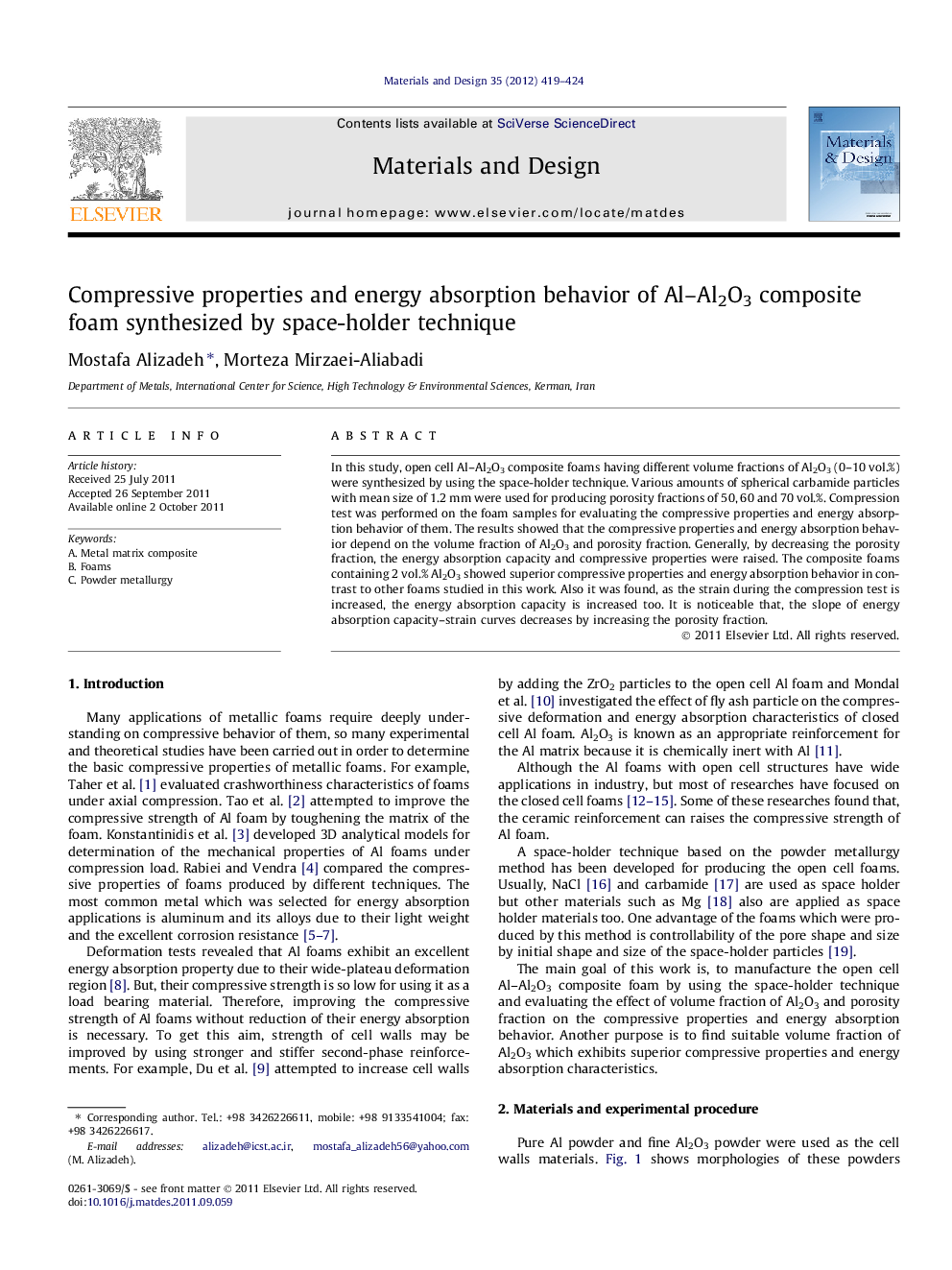| کد مقاله | کد نشریه | سال انتشار | مقاله انگلیسی | نسخه تمام متن |
|---|---|---|---|---|
| 830959 | 1470362 | 2012 | 6 صفحه PDF | دانلود رایگان |

In this study, open cell Al–Al2O3 composite foams having different volume fractions of Al2O3 (0–10 vol.%) were synthesized by using the space-holder technique. Various amounts of spherical carbamide particles with mean size of 1.2 mm were used for producing porosity fractions of 50, 60 and 70 vol.%. Compression test was performed on the foam samples for evaluating the compressive properties and energy absorption behavior of them. The results showed that the compressive properties and energy absorption behavior depend on the volume fraction of Al2O3 and porosity fraction. Generally, by decreasing the porosity fraction, the energy absorption capacity and compressive properties were raised. The composite foams containing 2 vol.% Al2O3 showed superior compressive properties and energy absorption behavior in contrast to other foams studied in this work. Also it was found, as the strain during the compression test is increased, the energy absorption capacity is increased too. It is noticeable that, the slope of energy absorption capacity–strain curves decreases by increasing the porosity fraction.
► By adding the alumina particles to Al foam the energy absorption behavior is improved.
► The plateau stress of composite foam is more than Al foam.
► The energy absorption follows vol.% Al2O3 similar to the plateau stress.
► To delay the first collapse in the high porosity foams, it is necessary to add more Al2O3 particles.
► The composite foams containing 2 vol.% Al2O3 show superior compressive properties.
Journal: Materials & Design - Volume 35, March 2012, Pages 419–424